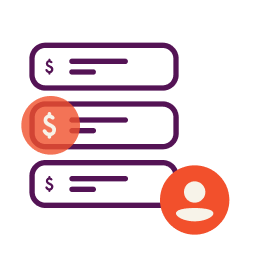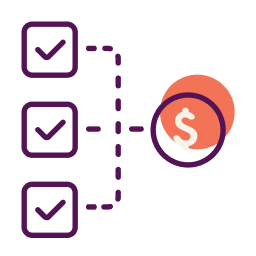Advertiser & Editorial Disclosure
Many business budgets begin and end in an outdated spreadsheet or static shared file. Managers are responsible for monitoring and updating budgets regularly, but if they’re not timely about entering transaction data, they’re constantly operating on a budget that’s out of date.
Not knowing the current status of your budget leads to overspending, under-strategizing, and missed opportunities for your business. Rather than relying on “dead” data, you can improve your budgeting strategy with “living” budgets.
What exactly is a “living” budget?
In the budgeting chapter of “Finance Basics,” Harvard Business Review says, “You need to understand the company strategy in order to create a useful budget.” But, no matter how strategic your budget, it’s only useful if it actually gets used.
Budgets that are used frequently become living documents or plans. These “living” budgets should guide daily (not monthly or quarterly) decisions about how and how much your people spend, as well as your company’s long-term strategy.
Even when a budget is built on strategy, it’s not a one-and-done process. With a living budget, you adjust and reallocate funds to better support the company’s vision. When priorities change or new business opportunities arise, you have the insights you need about available company funds to rapidly respond.
Creating a “living” budget for your business
For a budget to be living, it has to be executable, visible, and adaptable.
In order to execute on your budget, your business needs an efficient way to distribute allocated resources and to categorize expenditures. This depends on expense management and accounting software that play nice with each other.
For true visibility in budgeting, every department manager or budget owner should be able to see what’s happening—in real time. This may seem impossible, but the right financial tech stack will decrement your budget instantly after every purchase is made or invoice is paid, so you always know your current balance (more on this later).
Just because you’ve got a budget all shiny and clean in Excel, doesn’t mean your budgeting process is over. Your budget, like any good business, should be able to adapt. Your company needs to analyze spending so you can continuously optimize your budget to achieve your main business goal.
Online Bookkeeping by Bench
Finding the right tech stack
A living budget depends on the right technology. Finding the right financial tech stack can seem daunting, but it doesn’t have to be.
Using a modern expense management or accounting tool is critical to creating a “living” budget. The days of manual entry are behind us, and you ought to be taking advantage of technology that automates manual processes and gives you real-time data.
For example, using expense management software that syncs automatically with charge cards will allow you to see where company money is being spent—as it happens. You’ll always know your budget balance and can instantly add more funds to an employee’s card as needed. Or, if you see a team member is spending recklessly, you can easily set or change spending limits from a mobile app.
There are still benefits to traditional AP and expense reporting, but there’s nothing that says those processes can’t be streamlined.
Bottom line: Don’t kill business strategy with bad budgeting
Your budget is more than a way to project and control expenses for the coming month, quarter, or year. If created as part of a deliberate process, it’s also a strategic tool that can help align teams and resources with key business objectives.
Don’t kill your strategic budget by overlooking the processes and data your people need to assume ownership of resources under their control. Rather, breathe life into your budgets by using the right tools that give you real-time visibility.
This article was originally written on January 24, 2020 and updated on February 4, 2020.




Have at it! We'd love to hear from you and encourage a lively discussion among our users. Please help us keep our site clean and protect yourself. Refrain from posting overtly promotional content, and avoid disclosing personal information such as bank account or phone numbers.
Reviews Disclosure: The responses below are not provided or commissioned by the credit card, financing and service companies that appear on this site. Responses have not been reviewed, approved or otherwise endorsed by the credit card, financing and service companies and it is not their responsibility to ensure all posts and/or questions are answered.